Broccoli of Dune
As we entered the park this morning, Paula asked the ranger where the best place would be to see bighorn sheep. “I don’t know,” the ranger replied, “I’ve never seen any myself.”
We headed drove off up to Keys View, which overlooks the San Andreas Fault. A couple just leaving told us they had seen four bighorn sheep cross the trail to the viewpoint and head down the hill. They were well down the slope by the time we got to the viewpoint, but eagle eyes Paula spotted them.
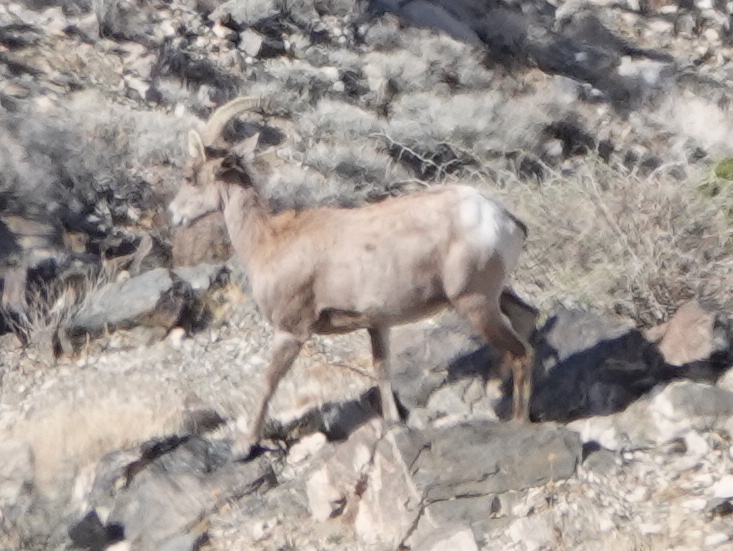
As well as bighorn sheep and the San Andreas fault, from Keys View you can also see Palm Springs, and the Salton Sea. Palm Springs has 47,000 people, 100 golf courses, and an entirely LGBT city council. The Salton Sea is the world’s largest accidental lake. These facts are in no way related.

In 1905, an attempt to irrigate the Salton Sink was a little too successful, and the Colorado river (you know, the one that carved the Grand Canyon) burst the banks of a canal and started flowing into this area, which is a couple of hundred feet below sea level. All efforts to plug the leak for the next eighteen months failed. Eventually the Southern Pacific railway stopped all regular trains in California for two weeks and dumped three thousand box cars of rubble and lumber into the canal. Take that, Colorado River!
Other wildlife we saw today included cute and lovable ground squirrels…
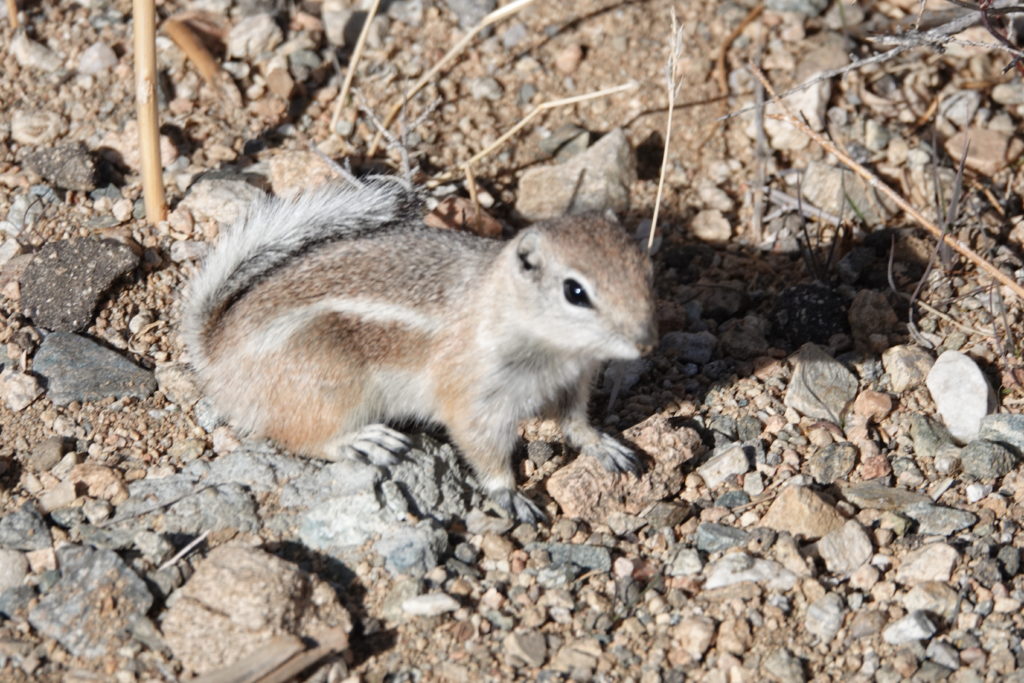
…or as this guy calls them, lunch.
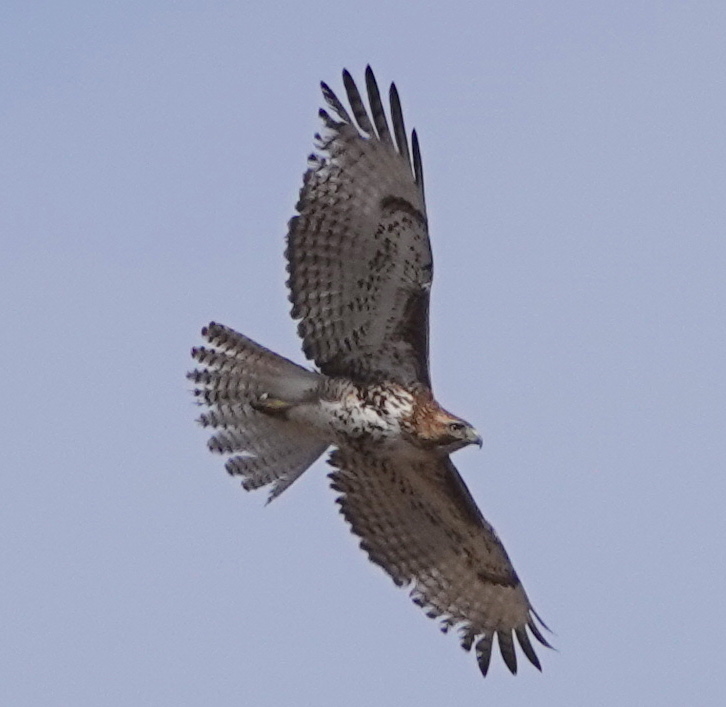
We hiked up to see the Lost Horse Mine, and abandoned gold working a couple of miles from the road.

Over nine thousand ounces of gold were extracted over the life of the mine. The ore was processed on site, and the remains of the equipment are still there.

I wonder if we would have bothered to walk that far for a copper mine?
A Say’s Phoebe perches on the yuccas or the fence of the mine, keeping an eye on visitors.
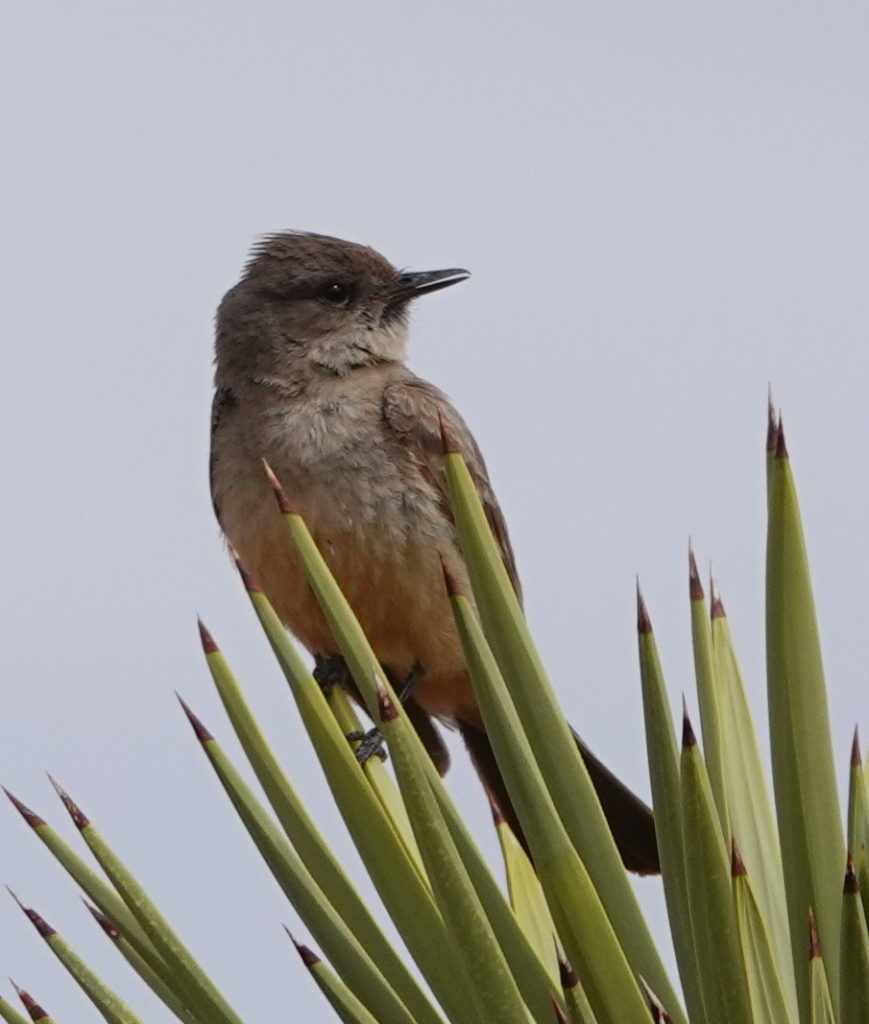
Near the trail, there are some yuccas preparing to bloom, putting up five foot tall flowering heads that look like a cross between a Dune sandworm and a head of broccoli.
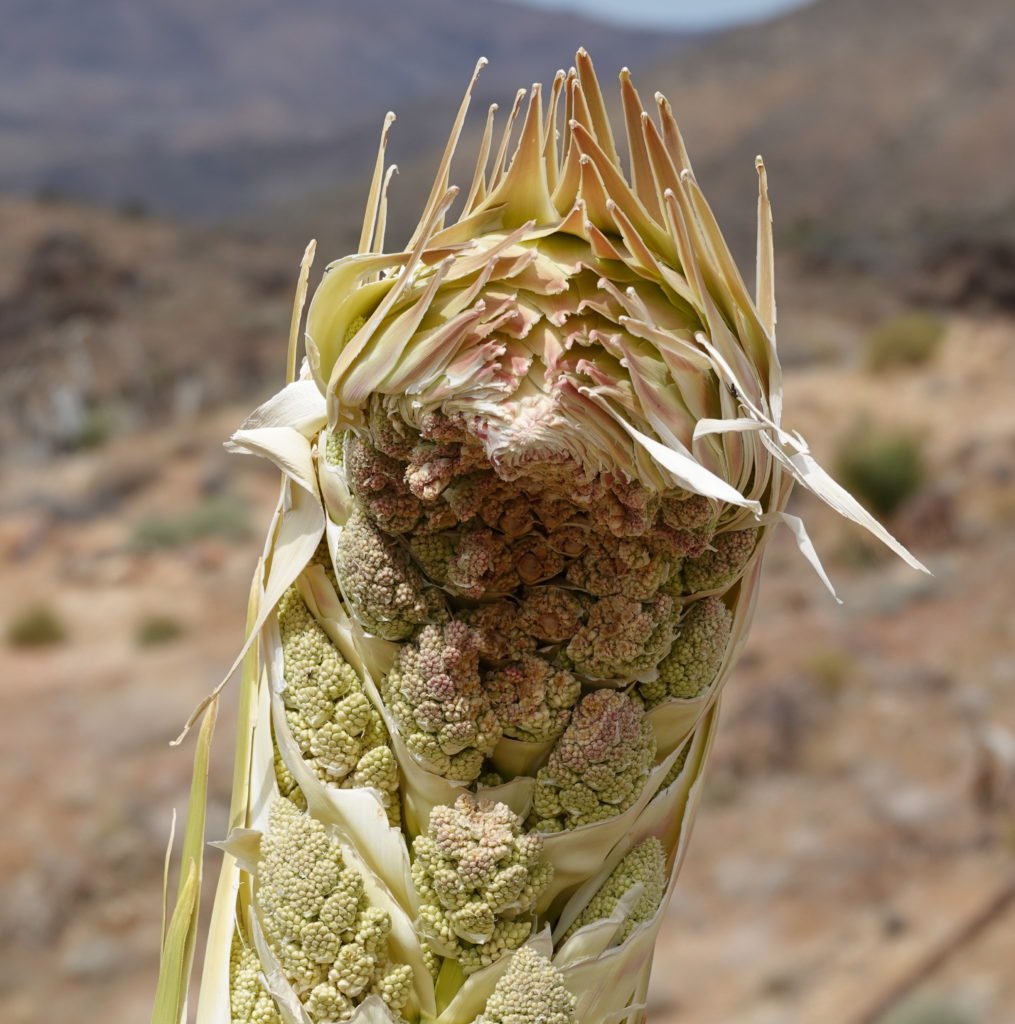
Further down the trail is something attempting to be daisies, but giving up in the heat.

On to the land of the vicious attack cactus.
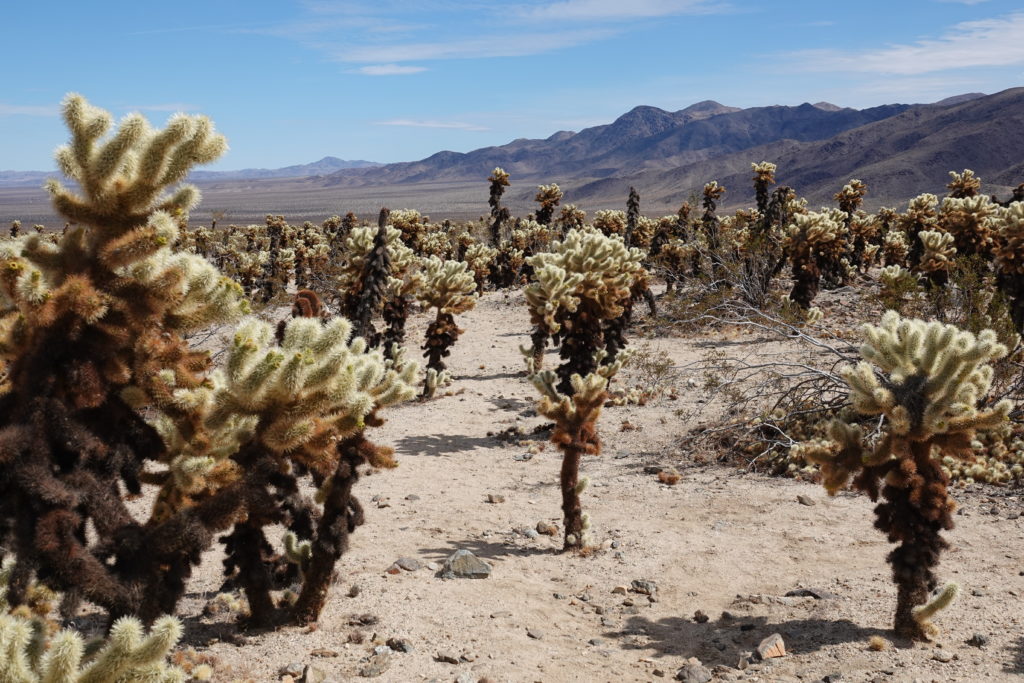
The cholla cactus is not very good at producing seeds, so it reproduces by having bits break off to clone itself. Since the bits that break off are covered in barbed spikes, they often get attached to passing animals or people and carried some distance before being chewed off. The cactus wren (a Goliath among wrens) liked to nest on these plants, but we didn’t see any.
When the cholla cactus dies, the inner support structure remains for some years after the flesh of the plant is gone.
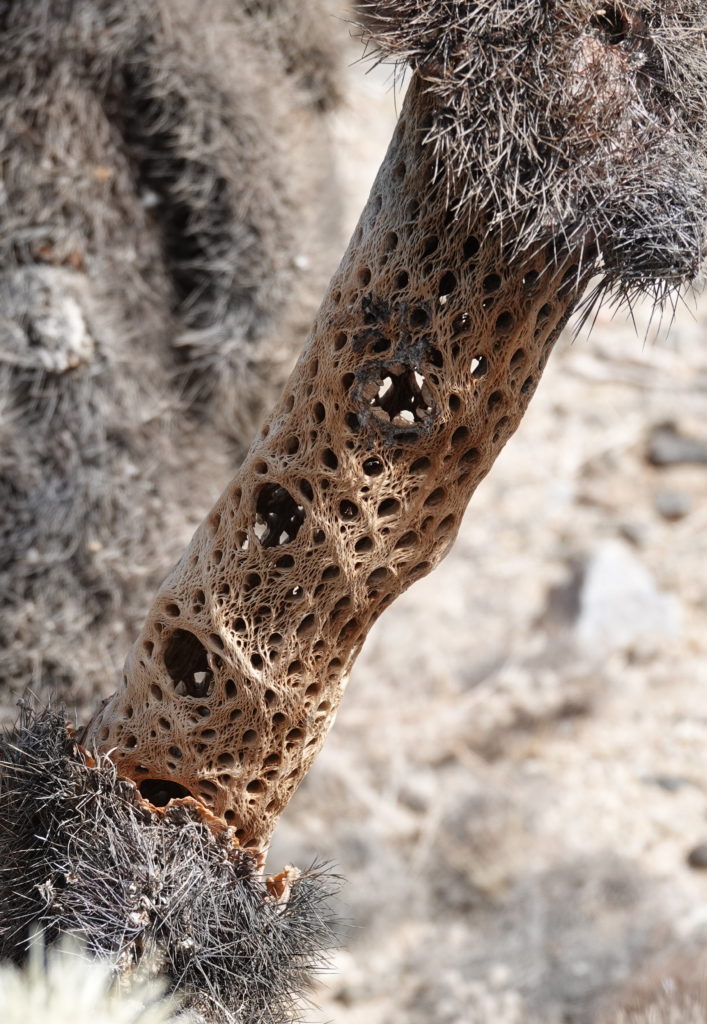
Further down the road is a grove of ocotillos. This is a deciduous bush, that spends most of its time covered with don’t-eat-me spines looking dead.
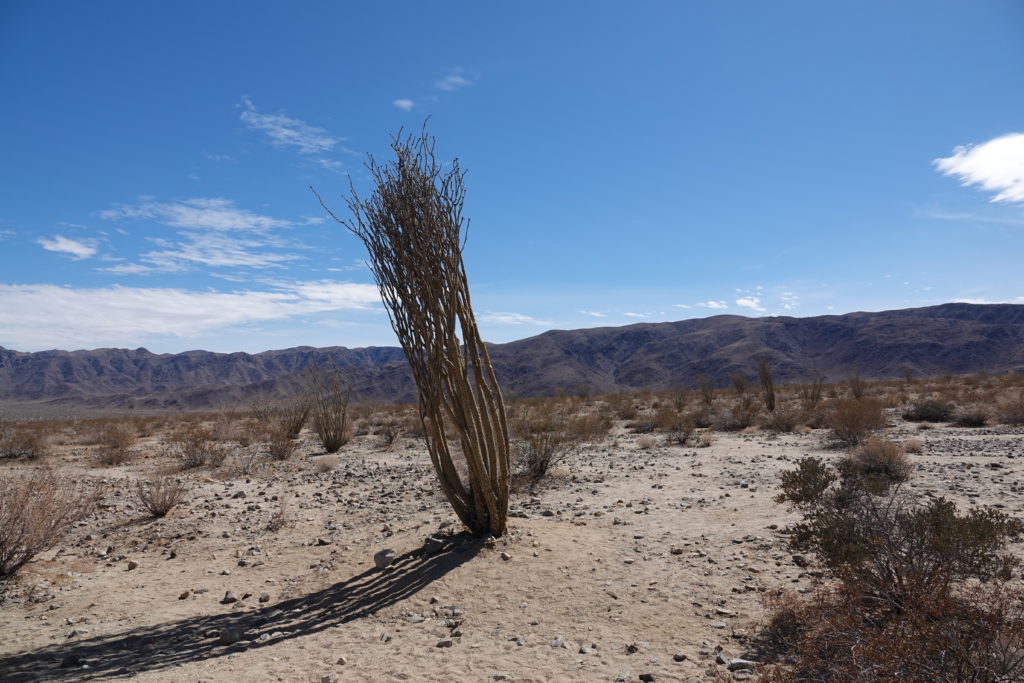
However, should a little water come its way, it covers itself in tiny leaves…
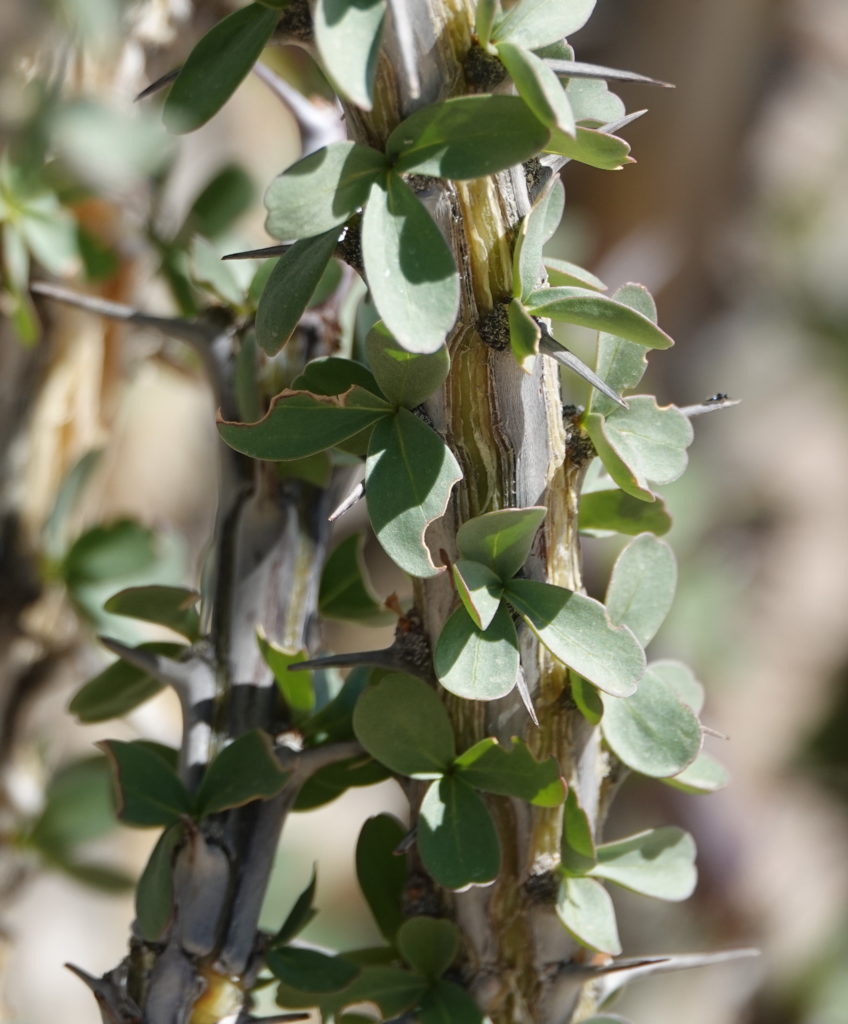
… and bursts into bloom
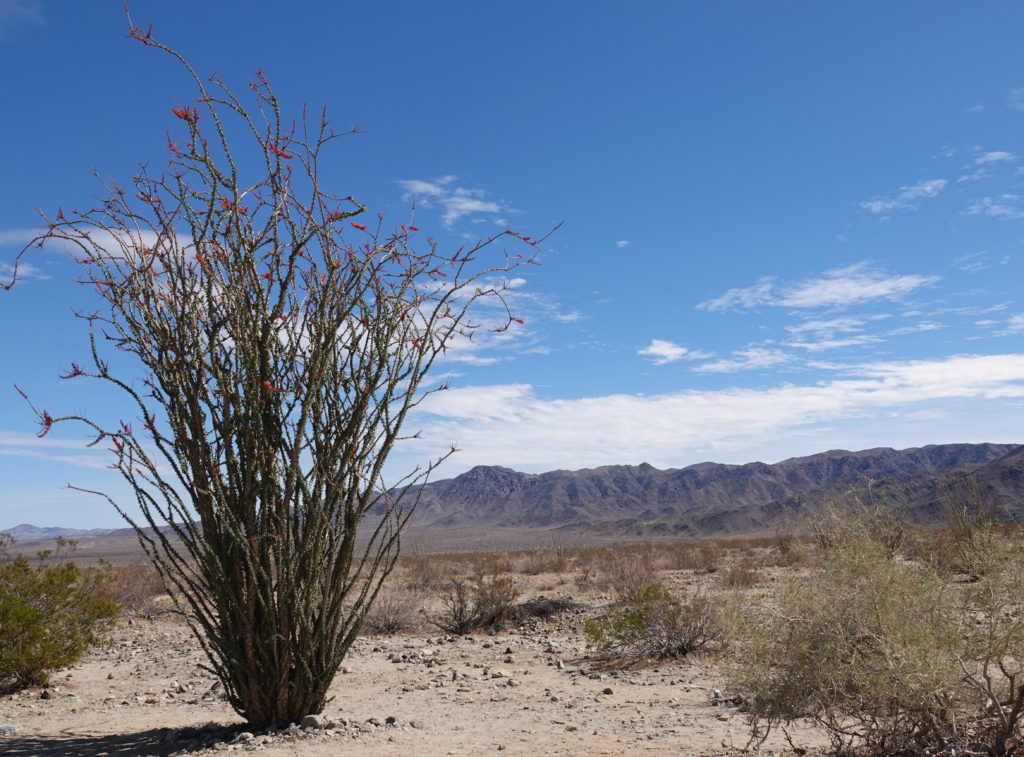
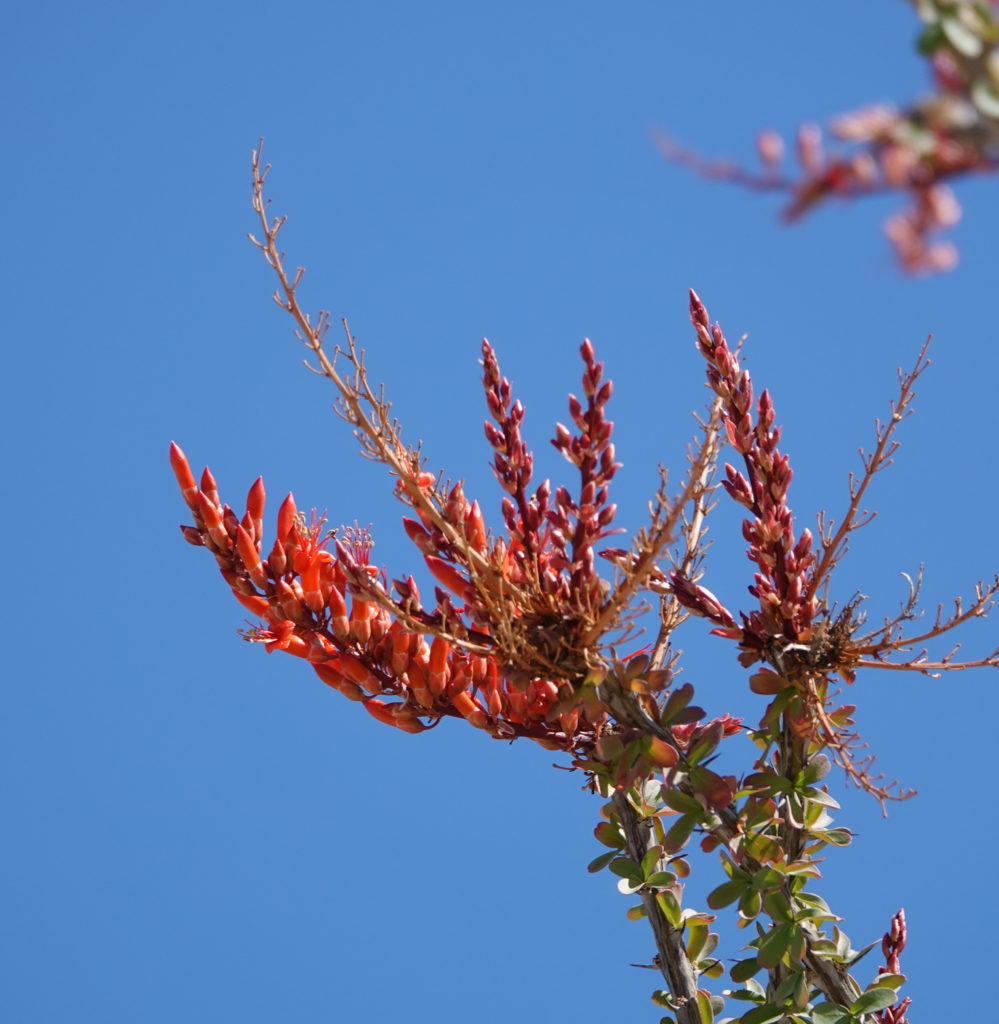
When the water dries up the leaves fall off. It can go through this cycle several times a year.
It was well into the afternoon by this time, so we headed back past this huge roadside flower (spotted by eagle eyes Paula again)…
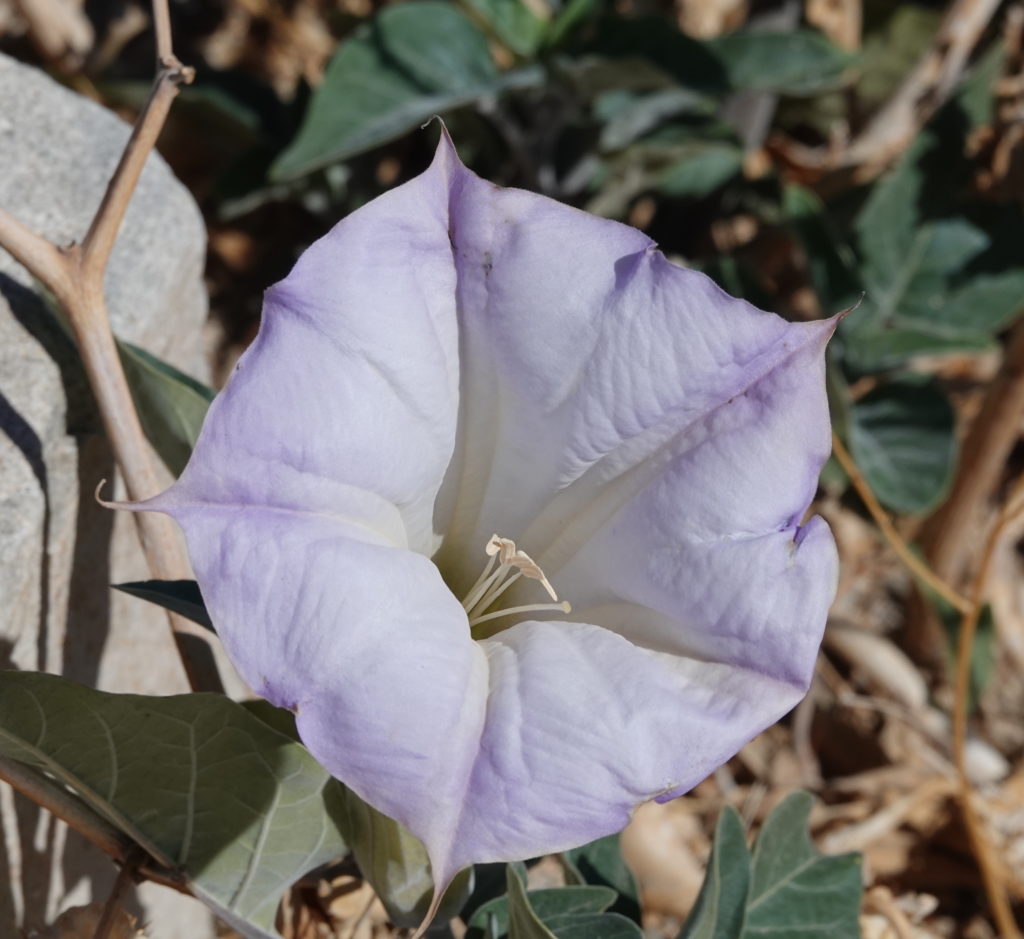
… back to the ranger station in Twenty Nine Palms. We filled in a form to report our bighorn sighting, and heard that there had also been a desert tortoise sighted today, which apparently makes it a red letter day for Joshua Tree. Outside there was a bird under our car. It hopped onto a bush. Could it be? Yes, the elusive cactus wren.
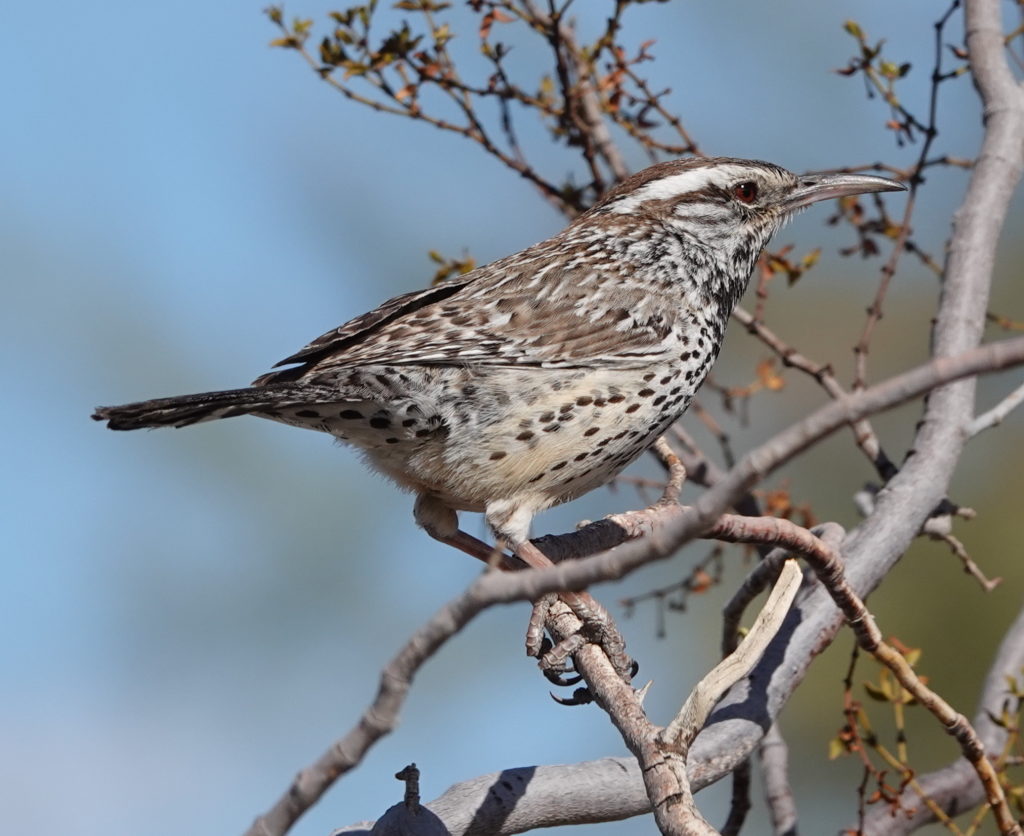
Habitat includes deserts, arid foothills, and parking lots.
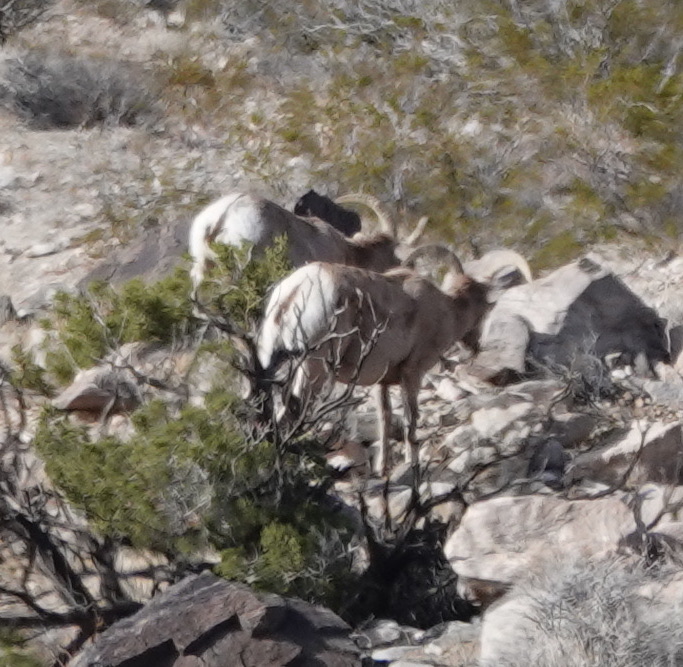
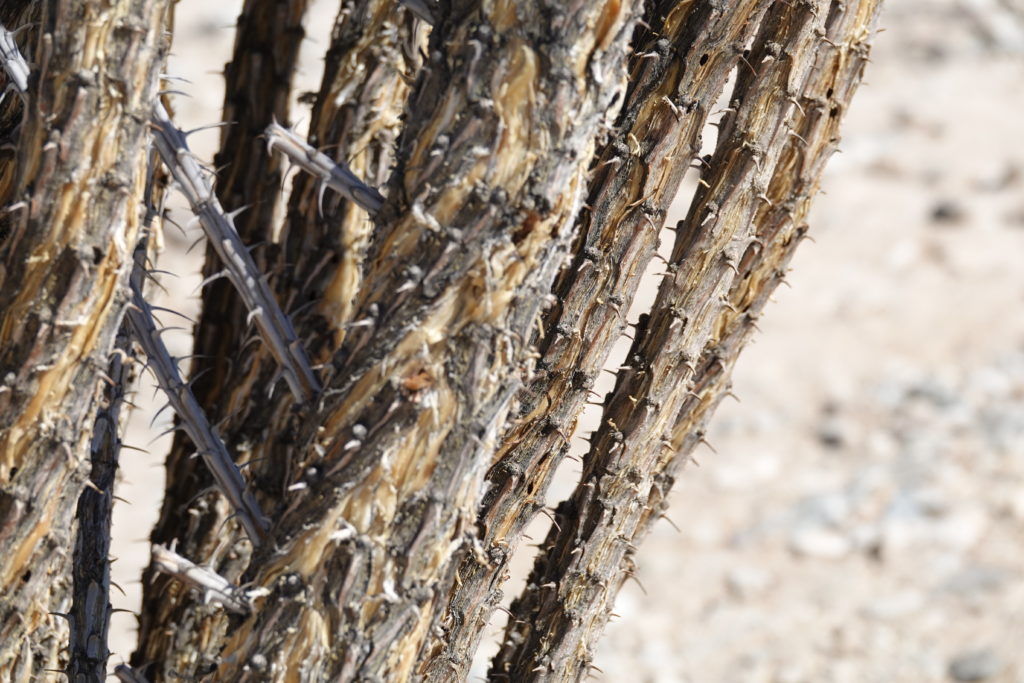
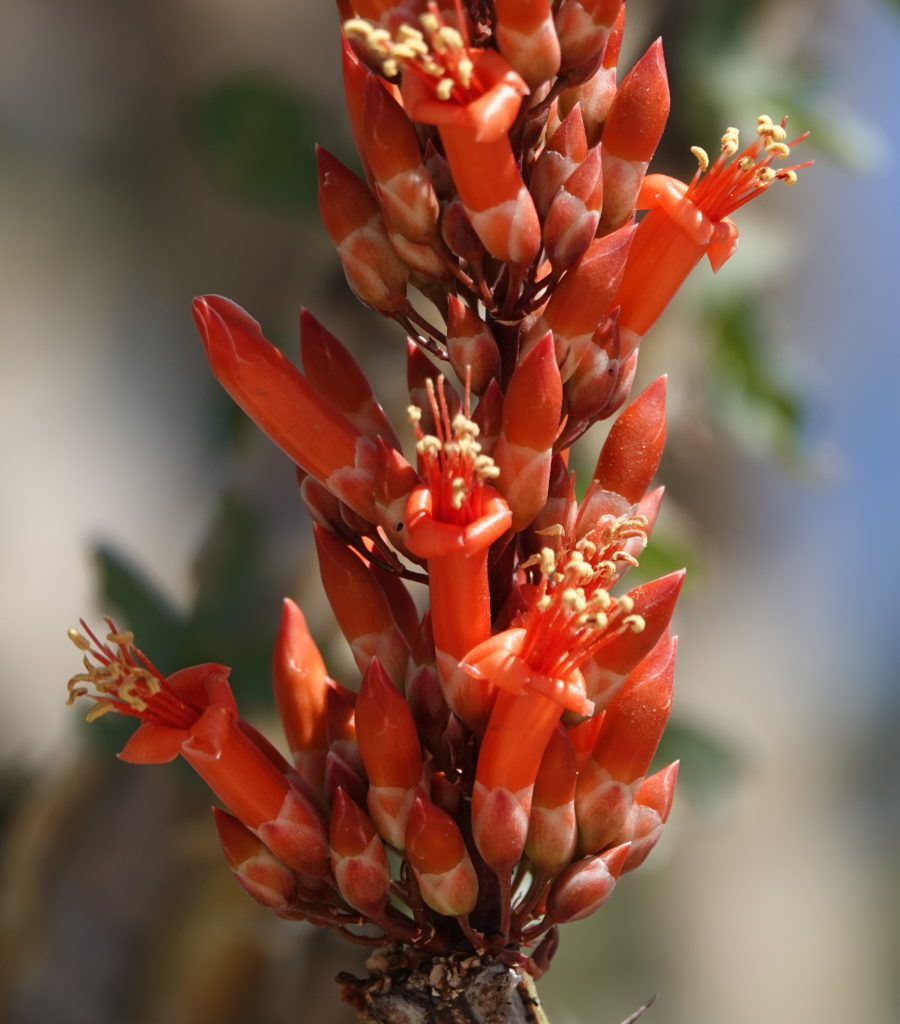
3 thoughts on “Broccoli of Dune”
So when are you coming to so us?
Margaret & Bob
Los Osos, CA
Really enjoyed
The ocotillo is also called Desert Candlewood because the conquistadors were shown that the dried branches would burn like a torch, due to the high content of plant saponins.
and that big white/purple wild flower is the sacred datura,btw.